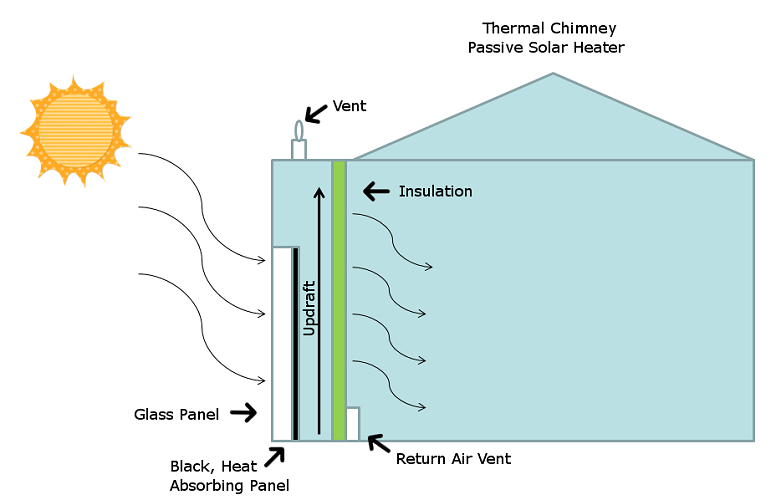
This guest article was kindly written by Ron Bean of The Green Chameleon. It’s a great introduction to domestic Solar Heating and how it all works.
It’s that time of year again – time to break out the sweaters, winter coats and watch those winter heating bills go up every month. Chances are that along with those monthly energy bills, you’re also contributing to global warming.
If your home uses a conventional gas-fired furnace, or fuel-oil, both of which are fossil fuels, which generate greenhouse gases. If you have electric heat, you are indirectly generating greenhouse gases, since the electricity needed to power electric heaters is often provided by coal-burning electric power plants
But what if you could keep your home toasty warm all winter long, generate zero greenhouse gases and your monthly heating bill was zero? That’s right, I said zero – as in nada, nothing at all
By using the sun’s energy to heat your home, you can effectively do exactly that. A solar water heater uses a solar panel which to collect energy from the sun and convert it to electricity. Solar heat works on an entirely different principle known as “convection” or “thermal siphoning”.
There are two primary categories of Solar Heaters; active and passive:
Active Solar Heaters use fans to move solar-heated air through a building
Passive Solar Heaters uses the fact that warm air rises to the heated air through a building
In both types of solar heaters, a collector is used to capture the sun’s energy. There are two types of collectors.
In an Active Solar Heater, an air collector is used, which consists of a metal box with a glass top that allows the sun’s energy to enter the box, trapping it. The trapped energy is concentrated on a dark metal plate and transferred via air-filled or fluid-filled tubes and then passed to the rest of the house using electric fans.
In Active Solar Heaters that use fluid collectors, tubes filled with a heat-conducting fluid (usually water or antifreeze) are used. These tubes capture and transfer the sun’s energy and pass it to the rest of the house using electric fans.
There are several types of passive solar heat in use today. In Passive Solar Heating, the structure of the building itself is used to capture the sun’s energy. This heated air is then transferred to the rest of the home without electric fans or another energy-consuming method.
One type of Passive Solar Heater, known as a Thermal Chimney is constructed with a chimney with a glass panel on one side. Inside, a black panel absorbs the sun’s energy. As the air in the chimney is heated, it causes an updraft which transfers the energy to the rest of the house either by convection (the heated air and enters the house through a vent) or conduction (the heated panel transfers heat to the adjoining walls).
The technology behind either type of Solar Heater is simple enough that with some careful planning is something that some homeowners are doing themselves.
Several sites have plans for building your own Solar Heater – here are a few:
You can find more information on eco-friendly projects from Ron at The Green Chameleon.

Dan is a well-experienced author who is interested in exploring new things related to eco-friendly gadgets and technologies. He never lets any latest technology go off his sight. Being passionate about contributing to the clean environment, he writes articles on the latest renewable gadgets and other energy-saving technologies.